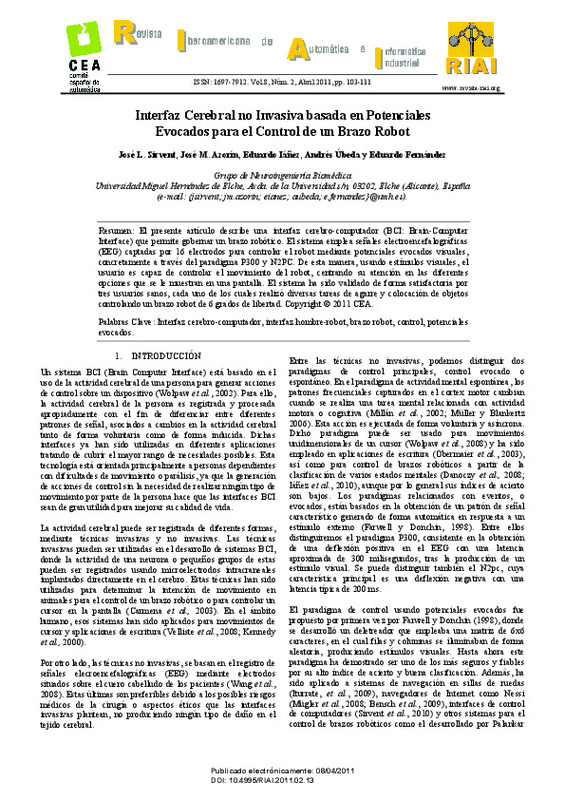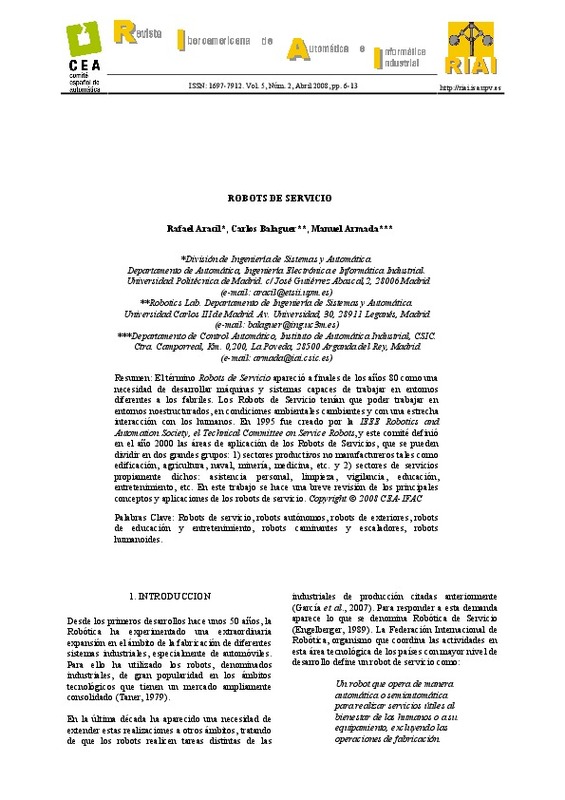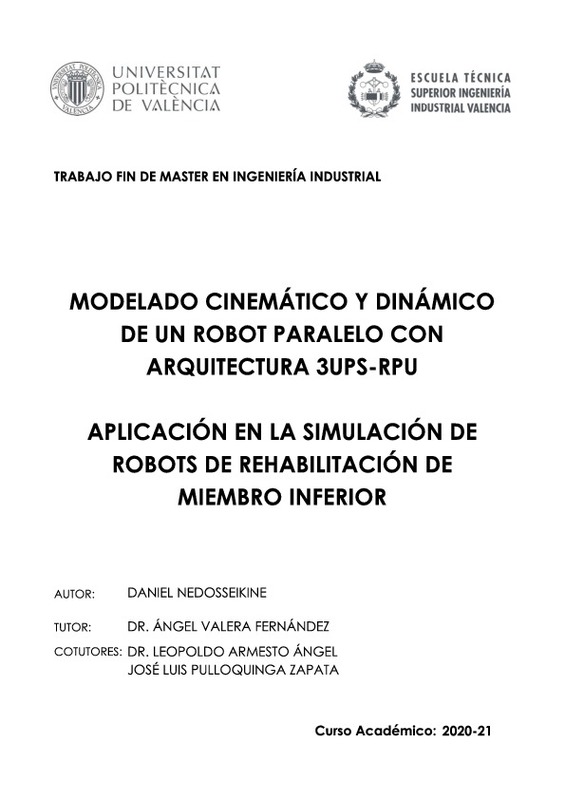&NA; (1991). American Electroencephalographic Society Guidelines for Standard Electrode Position Nomenclature. Journal of Clinical Neurophysiology, 8(2), 200-202. doi:10.1097/00004691-199104000-00007
Carmena, J. M., Lebedev, M. A., Crist, R. E., O’Doherty, J. E., Santucci, D. M., Dimitrov, D. F., … Nicolelis, M. A. L. (2003). Learning to Control a Brain–Machine Interface for Reaching and Grasping by Primates. PLoS Biology, 1(2), e42. doi:10.1371/journal.pbio.0000042
Covington, J. W., & Polich, J. (1996). P300, stimulus intensity, and modality. Electroencephalography and Clinical Neurophysiology/Evoked Potentials Section, 100(6), 579-584. doi:10.1016/s0168-5597(96)96013-x
[+]
&NA; (1991). American Electroencephalographic Society Guidelines for Standard Electrode Position Nomenclature. Journal of Clinical Neurophysiology, 8(2), 200-202. doi:10.1097/00004691-199104000-00007
Carmena, J. M., Lebedev, M. A., Crist, R. E., O’Doherty, J. E., Santucci, D. M., Dimitrov, D. F., … Nicolelis, M. A. L. (2003). Learning to Control a Brain–Machine Interface for Reaching and Grasping by Primates. PLoS Biology, 1(2), e42. doi:10.1371/journal.pbio.0000042
Covington, J. W., & Polich, J. (1996). P300, stimulus intensity, and modality. Electroencephalography and Clinical Neurophysiology/Evoked Potentials Section, 100(6), 579-584. doi:10.1016/s0168-5597(96)96013-x
Farwell, L. A., & Donchin, E. (1988). Talking off the top of your head: toward a mental prosthesis utilizing event-related brain potentials. Electroencephalography and Clinical Neurophysiology, 70(6), 510-523. doi:10.1016/0013-4694(88)90149-6
Iáñez, E., Azorín, J. M., Úbeda, A., Ferrández, J. M., & Fernández, E. (2010). Mental tasks-based brain–robot interface. Robotics and Autonomous Systems, 58(12), 1238-1245. doi:10.1016/j.robot.2010.08.007
Iturrate, I., Antelis, J. M., Kubler, A., & Minguez, J. (2009). A Noninvasive Brain-Actuated Wheelchair Based on a P300 Neurophysiological Protocol and Automated Navigation. IEEE Transactions on Robotics, 25(3), 614-627. doi:10.1109/tro.2009.2020347
Johnson, G. D., & Krusienski, D. J. (2009). Ensemble SWLDA Classifiers for the P300 Speller. Lecture Notes in Computer Science, 551-557. doi:10.1007/978-3-642-02577-8_60
Kiss, M., Van Velzen, J., & Eimer, M. (2008). The N2pc component and its links to attention shifts and spatially selective visual processing. Psychophysiology, 45(2), 240-249. doi:10.1111/j.1469-8986.2007.00611.x
Krusienski, D. J., Sellers, E. W., Cabestaing, F., Bayoudh, S., McFarland, D. J., Vaughan, T. M., & Wolpaw, J. R. (2006). A comparison of classification techniques for the P300 Speller. Journal of Neural Engineering, 3(4), 299-305. doi:10.1088/1741-2560/3/4/007
Luck, S. J., Heinze, H. J., Mangun, G. R., & Hillyard, S. A. (1990). Visual event-related potentials index focused attention within bilateral stimulus arrays. II. Functional dissociation of P1 and N1 components. Electroencephalography and Clinical Neurophysiology, 75(6), 528-542. doi:10.1016/0013-4694(90)90139-b
Millán, J. del R., Franzé, M., Mouriño, J., Cincotti, F., & Babiloni, F. (2002). Relevant EEG features for the classification of spontaneous motor-related tasks. Biological Cybernetics, 86(2), 89-95. doi:10.1007/s004220100282
Muller, K.-R., & Blankertz, B. (2006). Toward noninvasive brain-computer interfaces. IEEE Signal Processing Magazine, 23(5), 128-126. doi:10.1109/msp.2006.1708426
Obermaier, B., Muller, G. R., & Pfurtscheller, G. (2003). «Virtual keyboard» controlled by spontaneous EEG activity. IEEE Transactions on Neural Systems and Rehabilitation Engineering, 11(4), 422-426. doi:10.1109/tnsre.2003.816866
Schalk, G., McFarland, D. J., Hinterberger, T., Birbaumer, N., & Wolpaw, J. R. (2004). BCI2000: A General-Purpose Brain-Computer Interface (BCI) System. IEEE Transactions on Biomedical Engineering, 51(6), 1034-1043. doi:10.1109/tbme.2004.827072
Velliste, M., Perel, S., Spalding, M. C., Whitford, A. S., & Schwartz, A. B. (2008). Cortical control of a prosthetic arm for self-feeding. Nature, 453(7198), 1098-1101. doi:10.1038/nature06996
Yijun Wang, Xiaorong Gao, Bo Hong, Chuan Jia, & Shangkai Gao. (2008). Brain-Computer Interfaces Based on Visual Evoked Potentials. IEEE Engineering in Medicine and Biology Magazine, 27(5), 64-71. doi:10.1109/memb.2008.923958
Wolpaw, J. R., McFarland, D. J., Neat, G. W., & Forneris, C. A. (1991). An EEG-based brain-computer interface for cursor control. Electroencephalography and Clinical Neurophysiology, 78(3), 252-259. doi:10.1016/0013-4694(91)90040-b
Wolpaw, J. R., Birbaumer, N., McFarland, D. J., Pfurtscheller, G., & Vaughan, T. M. (2002). Brain–computer interfaces for communication and control. Clinical Neurophysiology, 113(6), 767-791. doi:10.1016/s1388-2457(02)00057-3
[-]











